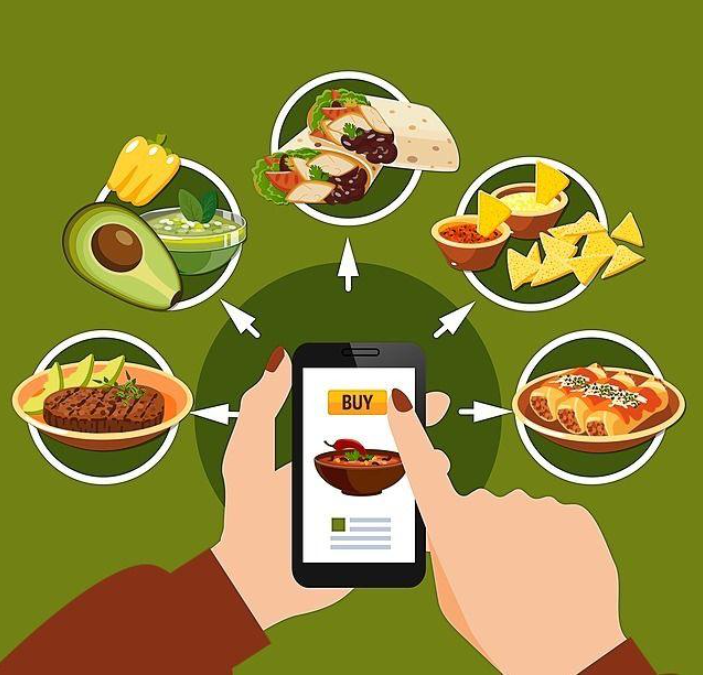
The Origins and Evolution of Home Food Delivery
Home food delivery is not an entirely new concept. Its roots can be traced back to ancient times when food was delivered to royalty and nobility. However, the modern iteration of this service began to take shape in the mid-20th century. The advent of pizza delivery in the 1960s marked the beginning of a new era. Pizza chains like Domino’s and Pizza Hut pioneered the concept of delivering hot, ready-to-eat meals directly to customers’ homes.
The true revolution in home food delivery, however, began with the rise of the internet and smartphones. The 2000s saw the emergence of online food ordering platforms that connected consumers with a variety of restaurants. Companies like Grubhub and Seamless in the United States, and Just Eat in the United Kingdom, started to gain traction. These platforms provided a convenient way for people to browse menus, place orders, and have their meals delivered with just a few clicks.
The next significant leap occurred with the advent of app-based delivery services like Uber Eats, DoorDash, and Deliveroo. These companies leveraged the power of mobile technology, making it even easier for consumers to order food from their favorite restaurants. With features like real-time tracking and personalized recommendations, these apps elevated the home food delivery experience to new heights.
Challenges in the Home Food Delivery Industry
Logistics and Efficiency: Managing the logistics of food delivery can be complex. Ensuring that meals are prepared and delivered in a timely manner while maintaining quality and freshness is a significant challenge. Traffic, weather conditions, and other factors can affect delivery times and customer satisfaction.
Cost and Pricing: The convenience of home food delivery often comes at a premium. Delivery fees, service charges, and tips can add up, making it a more expensive option compared to cooking at home or dining out. Striking a balance between affordability for consumers and profitability for delivery platforms and restaurants is a constant challenge.
Food Quality: Maintaining food quality during transit is crucial. Hot meals can become lukewarm, and cold dishes may lose their freshness. Packaging plays a vital role in preserving the taste and presentation of the food, but it also adds to the environmental footprint.
Sustainability: The environmental impact of home food delivery is a growing concern. Single-use packaging, increased carbon emissions from delivery vehicles, and food waste are significant issues. As the industry grows, finding sustainable solutions to mitigate these environmental impacts is imperative.
Labor and Fairness: The gig economy model, often used by delivery platforms, raises questions about fair wages and working conditions for delivery drivers. Ensuring that these workers receive adequate compensation, benefits, and protection is an ongoing challenge for the industry.
Benefits of Home Food Delivery
Convenience: One of the primary advantages of home food delivery is the unparalleled convenience it offers. Busy professionals, students, and families can save time and effort by having their meals delivered. This convenience is particularly valuable in urban areas where traffic and long working hours can make dining out or cooking at home challenging.
Variety: Home food delivery services provide access to an extensive range of cuisines and dishes. From local favorites to international delicacies, consumers can explore diverse culinary options without leaving their homes. This variety is a boon for food enthusiasts who enjoy trying new flavors and dishes.
Accessibility: Home food delivery has made restaurant-quality meals accessible to a broader audience. People who may have physical limitations, health concerns, or other constraints can now enjoy their favorite restaurant meals without leaving their homes. This inclusivity has been particularly beneficial during the COVID-19 pandemic, when many individuals were unable to dine out due to health risks.
Support for Local Businesses: Many home food delivery platforms partner with local restaurants, providing them with an additional revenue stream. This support is crucial for small and independent eateries that may not have the resources to establish their own delivery infrastructure. By participating in delivery platforms, these businesses can reach a larger customer base and thrive in a competitive market.
Customization and Special Diets: Home food delivery services often allow for customization of orders to cater to individual preferences and dietary requirements. Whether it’s requesting extra toppings, specifying allergen-free ingredients, or choosing healthier options, consumers have greater control over their meals.


